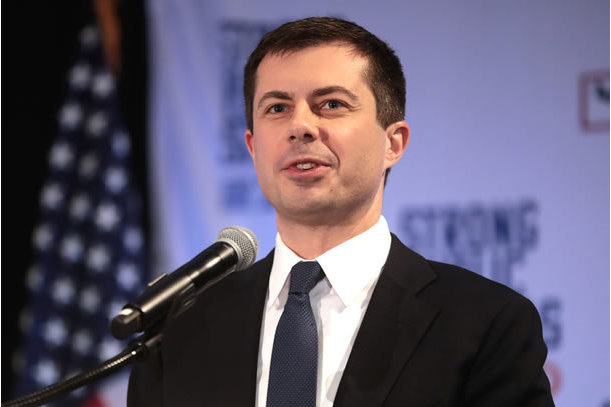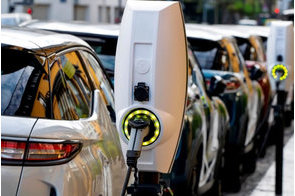Worldwide transport activity to double, emissions to rise further - Report

Summary
The ITF Transport Outlook 2021 says that transport CO2 emissions can be cut by almost 70 per cent over the 2015-50 period with the right policies.
Global transport activity will more than double by 2050, and traffic emissions will rise by 16 per cent compared to 2015, even if existing commitments to decarbonise transport are fully implemented. This is according to the latest report by the International Transport Forum (ITF), an intergovernmental organisation with 62 member countries.
The ITF Transport Outlook 2021, which was launched on Monday, states that any currently expected emissions reductions will be more than offset by the increased demand for transport. The report, however, says that transport CO2 emissions can be cut by almost 70 per cent over the 2015-50 period with the right policies.
A reduction of this magnitude will bring the goal of the Paris Agreement to limit global warming to 1.5˚C within reach, ITF said in a statement it sent to Financial Nigeria. The statement said reaching the goal requires ambitious low-carbon policies now, reinforcement of positive behavioural changes caused by the COVID-19 pandemic, and that stimulus spending packages should be geared towards decarbonisation.
The ITF Transport Outlook is a biennial flagship report of the International Transport Forum, a sister organisation of the Organisation for Economic Co-operation and Development (OECD). The 2021 report presents three main scenarios for the future of passenger and freight transport, and all transport modes. The scenarios include detailed projections for transport CO2 emissions under different conditions, allowing an assessment of the potential impacts of future transport activity on climate change.
The report was launched at a press conference on 17 May, 2021, by Ireland’s Minister of Transport, Eamon Ryan, and ITF Secretary-General Young Tae Kim. The press conference also opened the Annual Summit of Transport Ministers, which is holding remotely from 17 to 28 May 2021. The launch of the report on Monday was immediately followed by the opening plenary of the conference, featuring, among others, Pete Buttigieg, U.S. Secretary of Transportation; Andreas Scheuer, Federal Minister of Transport and Digital Infrastructure, Germany; Grant Shapps, Secretary of State for Transport, United Kingdom; and Adina Vălean, European Commissioner for Transport.
Based on 2015 figures, at present, urban mobility generates 40 per cent of all CO2 emissions from the movement of people; non-urban transport is responsible for the remaining 60 per cent; 75 per cent of all emissions from urban passenger transport come from private cars; and freight emits more than 40 per cent of all transport CO2 – with its share growing slightly. The report further says that if current policies remain in place between now and 2050, passenger transport activity will increase 2.3-fold (measured in passenger-km); freight transport activity will grow 2.6-fold (measured in tonne-km); emissions from urban mobility will fall very slightly, by 5 per cent; and freight CO2 emissions will grow by 22 per cent.
According to the report, there are other ambitious policies that can also lock in CO2 reduction windfalls from Covid-19. Such policies could cut CO2 emissions from urban mobility by as much as 80 per cent by 2050; regional passenger transport (e.g., by air, rail, bus) could more than halve its CO2 emissions; and freight emissions could be 72 per cent less.
The report provides six recommendations on how governments can set the world on a path towards sustainable mobility, achieve the goals of the Paris Climate Agreement and support the UN Sustainable Development Goals (SDGs). The first is alignment of COVID-19 recovery packages to revive the economy, combat climate change and strengthen equity. Second is implementation of much more ambitious policies that will reverse the growth of transport CO2 emissions. Third, different transport sectors should be targeted with strategies that reflect their specific decarbonisation potential and challenges, noting that not all strategies to “avoid, shift, and improve” are applicable across the sector in the same way.
Fourth, support should be given to innovation to accelerate the technological breakthroughs needed to decarbonise transport. Fifth, the priority should be shifted to improving accessibility, as transport planning tends to conflate increased capacity with improved accessibility. Rather, transport planning that serves citizens considers their desired destinations and focuses on how well transport options connect them.
Six, and finally, collaboration with non-transport sectors and between public and private actors should be intensified, because transport decarbonisation is inseparable from developments in other sectors. Sustainable mobility is only possible with clean energy. In turn, low-carbon transport is central to sustainable trade and tourism.
“I am proud to present the 2021 edition of the ITF Transport Outlook,” said ITF Secretary-General Young Tae Kim. “It provides policy makers with insights from cutting-edge ITF research on the three major challenges of our time: the COVID-19 pandemic, climate change and inequality. It shows how they are linked, but also identifies actions - actions that are critical to ensure an effective and equitable transition to sustainable mobility on an urban, regional and global level in the wake of the pandemic.”
The ITF acts as a think tank for transport policy and organises the Annual Summit of transport ministers. Administratively integrated with the OECD, the ITF is politically-autonomous and it is the only global body that covers all transport modes.
Related
-
IFC, Kobo360 invite innovators to pilot sustainable cooling in Nigeria
Sustainable cooling technologies represent a fast-growing business opportunity with particular importance to emerging ...
-
Norway, Switzerland, and Sweden lead electric vehicle uptake
Norway, Switzerland, and Sweden rank at the top of the index comprising 40 countries, which is largely due to the ...
-
Tayo Bamiduro: How MAX is driving sustainable mobility across Africa
We need to transform the people part of our transport infrastructure in Africa.










